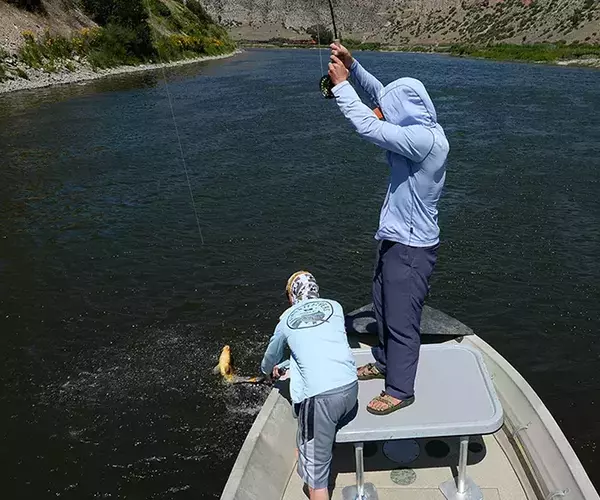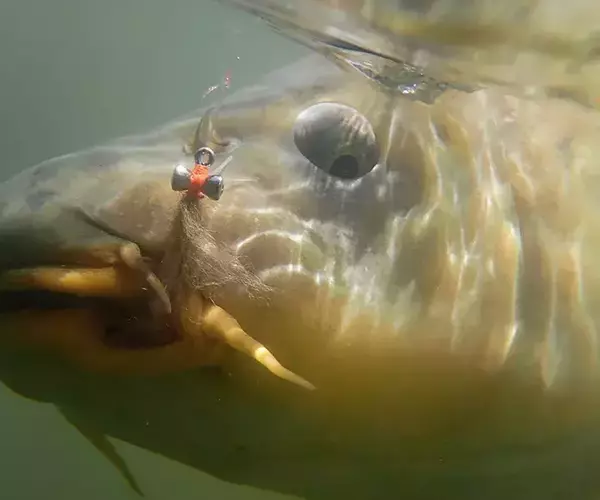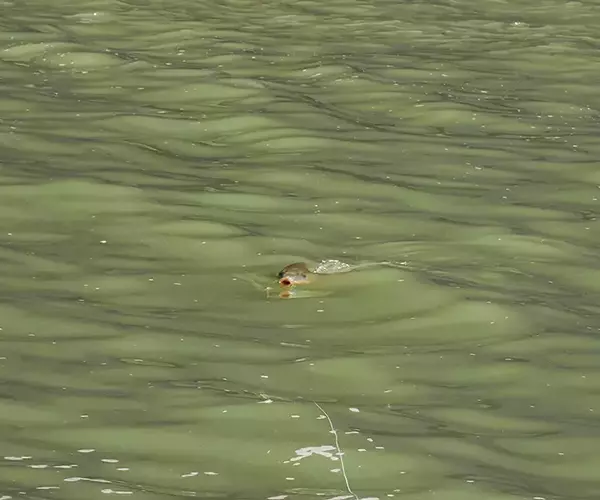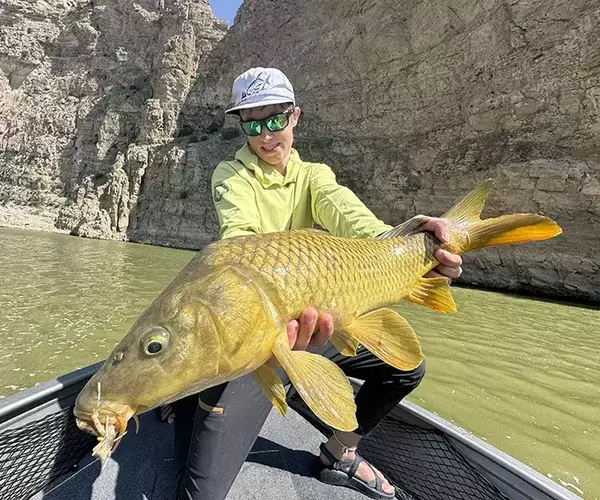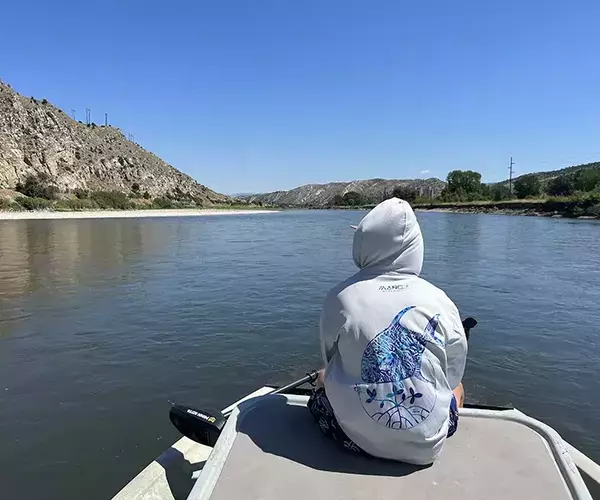7 Tips on Bozeman Fly Fishing for Carp
Posted by: Alex
Date: 08/16/2025
Carp are not the most celebrated species in the Bozeman area, but they offer a unique and rewarding challenge. Highly adaptable and remarkably intelligent, they thrive in warm, shallow water during the hottest months of the year.
Montana Fly Fishing for Carp
Their size, strength, and sharp instincts make them one of the most technical targets for the fly angler. For those seeking a pursuit that blends strategy, precision, and power, few experiences match the satisfaction and frustration of stalking carp under the bright Montana sky.
1) Choosing the Best Fly Rod
Targeting carp on the fly requires a rod with enough backbone to control a powerful fish, yet the finesse to deliver accurate casts at varying distances. A 7- or 8-weight strikes the ideal balance, light enough for precise presentations, but strong enough to handle the long runs and determined fights carp are known for. The St. Croix EVOS and Sage Igniter series' offer the power, durability, and smooth casting performance needed for warmwater sight fishing. Paired with a quality reel and dependable drag system, it is well-suited for these hard-pulling fish.
2) Seek Specialized Fly Lines
While trout lines can work, warmwater fly lines are better suited for this style of summer fly fishing in Montana. When air temperatures push into the 90s, a tropical fly line like the RIO Redfish XP is great for throwing heavy flies quickly and accurately to tailing carp in that 20-30 foot range, while the RIO Warmwater Predator-Floating is great for lighter flies and longer casts to cruising fish. Built with aggressive front tapers, these lines are designed for quick, accurate casts to spooky fish. When you only get a few casts before that fish is gone, the right fly line matters.
3) Leader
A 7 1/2-foot fluorocarbon leader with 12-16 pound tippet of fluorocarbon is all you need. Fluorocarbon is less visible and more abrasion-resistant than standard monofilament—tapered bonefish or flats leaders in the 12- to 16-pound range are great choices too.
4) Fly Selection
Carp are opportunistic feeders and will take a wide range of flies if presented correctly. Success often comes down to simply getting the fly in front of them without spooking the fish. Profile and weight are usually more important than the exact pattern, as the fly must match the size and sink rate needed to reach the fish naturally. Crayfish imitations such as the zirdle, zonker, and dead drift crayfish are excellent starting points for building a carp box, each offering a different weight profile while keeping a buggy look that is unlikely to be refused if presented well. Bonefish patterns like spawning shrimp, crazy charlies, and flashy shrimp variations are also effective when carp are tailing or digging in the mud. Rising pods of carp are frequently encountered along foamline and in back-eddies along the Missouri River. Small mayfly spinners and hopper imitations will usually do the trick when presented well.
5) Where to Fly Fish for Carp Around Bozeman
Several locations near Bozeman provide excellent summer carp fishing. The Missouri River near Townsend offers shallow flats and slow side channels perfect for sight fishing when the water is warm and clear. Below Toston Dam, broad runs and long, slow eddies hold strong numbers of carp and can be approached by wading or from a boat. Canyon Ferry Reservoir is another reliable option, with expansive shoreline flats and protected coves that often come alive with feeding fish during the peak of summer heat. The Missouri River Headwaters area, Three Forks Ponds, and the lower Jefferson River are a few carp fly fishing spots close to Bozeman.
6) Presentation and Tactics
Carp have keen senses and an unforgiving nature, reacting quickly to anything out of place. A bad cast or sloppy presentation usually results in spooked fish , so it is better to move on and look for another fish. They are also notoriously temperamental, and not every fish will be willing to eat no matter how well the fly is presented. If a carp has seen the fly several times and shown no interest, it is time to find a new target. Covering water and focusing on active fish will yield more success than trying to convince one that is not in the mood.
7) Strip Set
When it comes to hooking a carp, the strip set is the most reliable method. Carp have thick, rubbery lips and feed by sucking in food, making the take both subtle and highly visual. The experience is much like flats fishing, watching the fish approach, tip down, and inhale the fly. A quick trout set will almost always pull the fly out of the fish’s mouth before the hook can set. Instead, keep the rod tip low and drive the hook home with a firm strip of the line. This direct connection ensures the hook penetrates and maintains steady pressure during the critical first moments of the fight.
Diversify Your Montana Fly Fishing Summer
Carp offer a combination of power, intelligence, and technical challenge that few other freshwater fish can match. Summer in Montana provides the perfect window to experience it, with warm water, active fish, and varied locations within easy reach of Bozeman. The hunt delivers the same satisfaction as walking a tropical island flat in search of bonefish or permit, stalking, spotting, and making the perfect cast to a wary target. Approach them with the right gear, a careful presentation, and the patience to focus on willing fish, and you will find that chasing these golden ghosts can be every bit as rewarding as any saltwater adventure. For anglers looking to sharpen their skills and add a new dimension to their summer fishing, carp are a pursuit well worth the effort.

